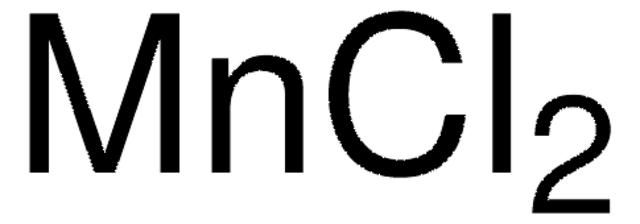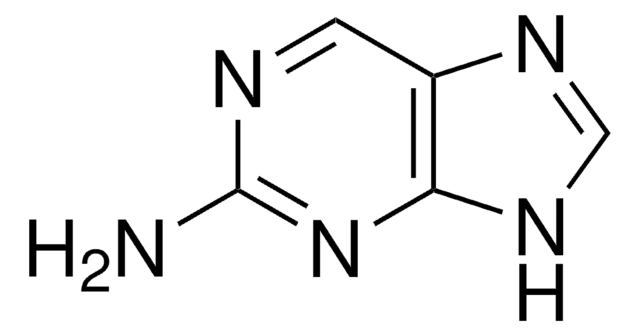V800247
Manganese(II) chloride
AR, ≥99%
Sinonimo/i:
Manganese dichloride, Sacchite
About This Item
Prodotti consigliati
Grado
AR
Nome Commerciale
Vetec™
Saggio
≥99%
Forma fisica
crystalline powder
pH
5.0-6.0 (5%)
Punto di fusione
652 °C (lit.)
Densità
2.98 g/mL at 25 °C (lit.)
Anioni in tracce
sulfate (SO42-): ≤0.005%
Cationi in tracce
Ba: ≤0.01%
Ca: ≤0.03%
Cu: ≤0.0005%
Fe: ≤0.0005%
K: ≤0.01%
Mg: ≤0.005%
Na: ≤0.05%
Ni: ≤0.002%
Zn: ≤0.005%
heavy metals (as Pb): ≤0.0005%
Stringa SMILE
Cl[Mn]Cl
InChI
1S/2ClH.Mn/h2*1H;/q;;+2/p-2
GLFNIEUTAYBVOC-UHFFFAOYSA-L
Cerchi prodotti simili? Visita Guida al confronto tra prodotti
Note legali
Avvertenze
Danger
Indicazioni di pericolo
Consigli di prudenza
Classi di pericolo
Acute Tox. 3 Oral - Eye Dam. 1 - STOT RE 2
Organi bersaglio
Brain
Codice della classe di stoccaggio
6.1D - Non-combustible acute toxic Cat.3 / toxic hazardous materials or hazardous materials causing chronic effects
Classe di pericolosità dell'acqua (WGK)
WGK 2
Punto d’infiammabilità (°F)
Not applicable
Punto d’infiammabilità (°C)
Not applicable
Certificati d'analisi (COA)
Cerca il Certificati d'analisi (COA) digitando il numero di lotto/batch corrispondente. I numeri di lotto o di batch sono stampati sull'etichetta dei prodotti dopo la parola ‘Lotto’ o ‘Batch’.
Possiedi già questo prodotto?
I documenti relativi ai prodotti acquistati recentemente sono disponibili nell’Archivio dei documenti.
Il team dei nostri ricercatori vanta grande esperienza in tutte le aree della ricerca quali Life Science, scienza dei materiali, sintesi chimica, cromatografia, discipline analitiche, ecc..
Contatta l'Assistenza Tecnica.




